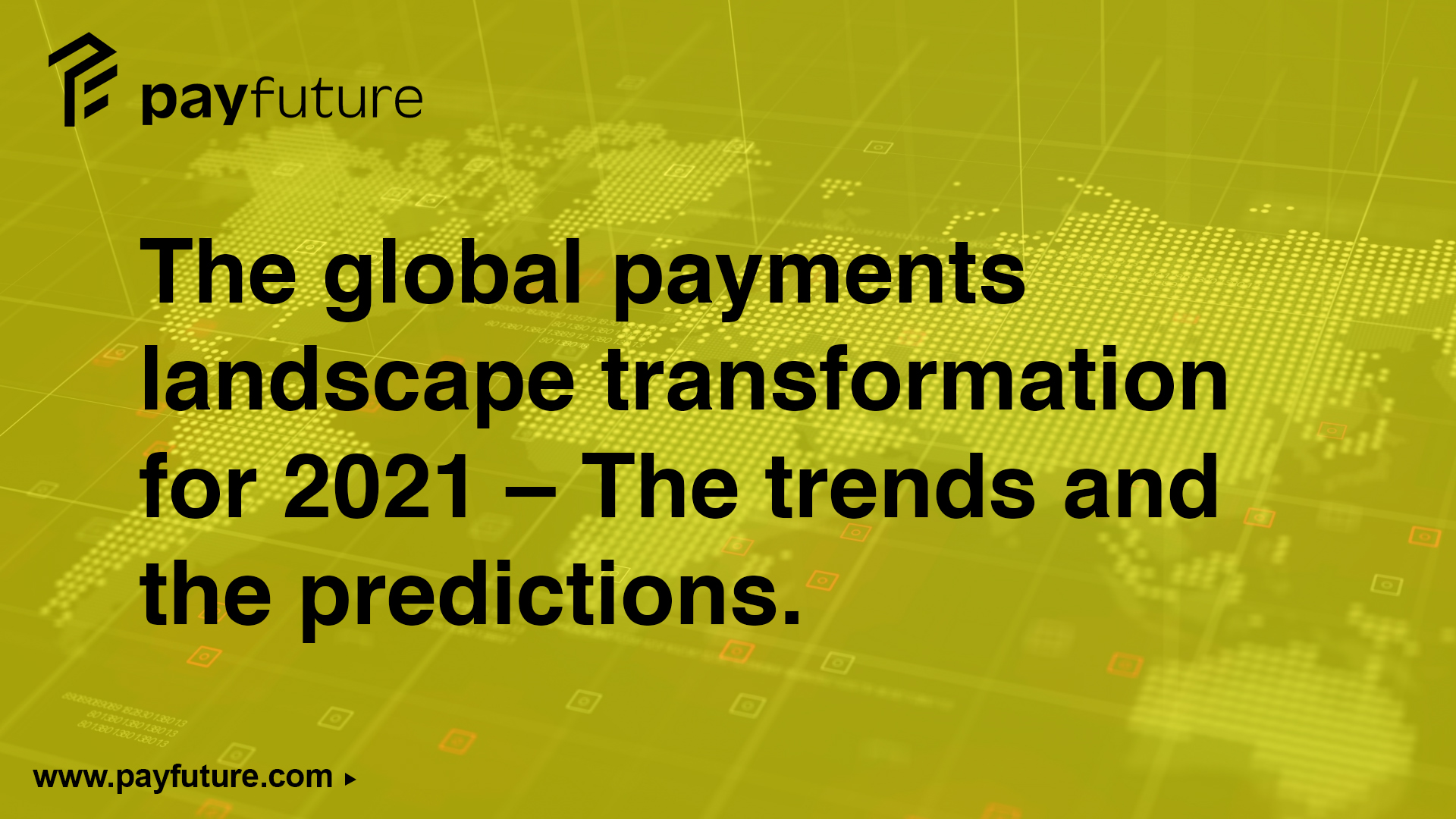The global payments landscape transformation for 2021 – The trends and the predictions.
Due to the covid19 pandemic this has increased demand for online payments.
Below we have listed 8 predictions and trends for the global payments landscape transformation in 2021;
- There will be an increased use of digital biometrics for online security
- Regulatory frameworks will come into play and be more fit for purpose
- The ongoing trend is showing an increase in online payments that will continue globally
- Cash transactions will continue to decrease globally
- In emerging markets where some people still remain unbanked, they will make more use of mobile wallets
- Countries with high revenue growth are also characterised by rapid electronic transaction growth – this is an ongoing trend
- Digital marketplaces are expected to account for over 60 percent of digital commerce volume in the next few years.
- Small and medium-size enterprises (SMEs) are contributing to a growing share of valueadded services in payments revenue.
According to other sources including research from Mckinsey, the other areas that may change the global payment landscape include:
An increase in ‘One stop shop,’ platforms
This is a trend that acquirers should look at. It is likely to be lucrative if acquirers can create SMEfocused one-stop-shop platforms.
A deeper look at the Infrastructure
Some infrastructure setups are not scalable and they are sometimes known to be burdening. There is a dramatic need for the software, data platforms and infrastructure to be an enabler to support merchants efficiently across borders, locations, verticals and devices.
Customer segmentation for commercial growth – Sales and marketing
Organising the business around segments based on how customers buy, what size they are and what business industry they are in, is useful to be able to compete effectively in a competitive market.Segmenting customers like this will also enable acquirers to invest appropriately in relevant sales and marketing campaigns. This is area that those in the finance sector will continue to look at.
The importance of data analytics and getting this right – Differentiating through data.
As we already know, the shift to digital has created a much greater demand for enhanced authorisation, fraud checks and faster underwriting decisions etc. Acquirers often have lots of data,however being able to find the data that they need is valuable. An unclear data strategy and poor data architecture would negatively impact the business and cause a lot of wasted time. These areas are things that need to be looked to improve the future of digital payments. This innovation is currently happening, and it will continue.
Complacency is a bad thing
This is a fast-changing industry and you need to stay ahead. The growth of APMs (alternative payment methods), with often evolving regulations, ongoing innovation and retailer interest, will necessitate their inclusion in acquirer portfolios. As APMs capture more transactions, acquirers may need to refine and adapt their current business models and processes. This may mean looking at their fraud processes, how they price things and how they are going to keep driving value that is future proof. Being able to adapt to the changing demands and trends is important.
Customer experience improvements
As the number of devices, payment options and channels increase, acquirers will need to continue to provide a valuable customer journey experience that caters for their needs.
Supply chain finance
According to Mkinsey research, they state that, ‘significant value in the global supply-chain finance (SCF) market remains untapped. Almost 80 percent of eligible assets do not benefit from better working-capital financing. We now see change accelerating in the market in response to a convergence of factors: an increased focus on working capital, structural changes in financing for small and medium-size enterprises (SMEs), a step change in digital adoption and the potential geographic relocation of $2.9 trillion to $4.6 trillion in spending on cross-border supply chains (for 16 to 26 percent of global goods exports) over the next five years.’
